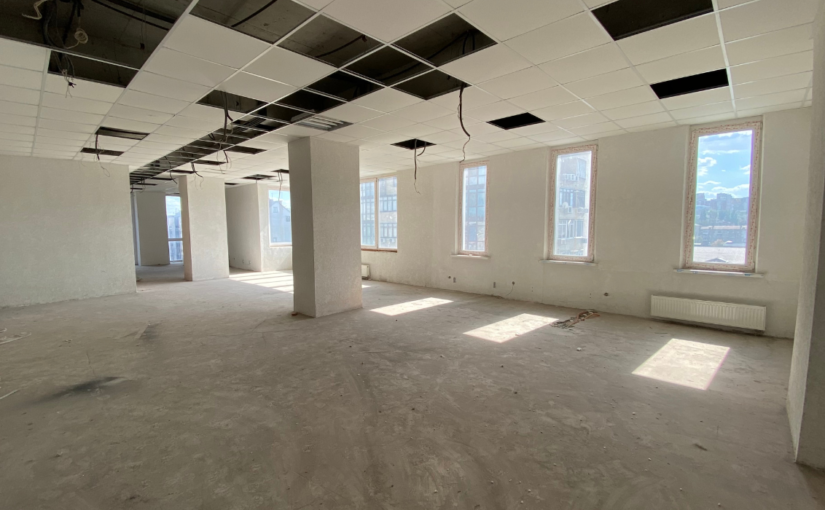back
Financing Office Building Renovations: Tips and Best Practices
04-2023

Renovations to your office building can improve its aesthetic appeal, improve the working environment, and raise the property’s worth. It can be difficult to finance these renovations, though. Depending on the size of the undertaking, costs may mount up quickly and finance may become elusive. We will go over advice and best practices for funding office building renovations in this article.
-
Define Your Renovation Goals
Define your renovation goals before applying for finance. This stage will assist you in figuring out how much funding you’ll need and how to allocate it. List the modifications you want to make, such as installing new flooring, upgrading the HVAC, or replacing the lighting. Once you are certain of your restoration objectives, you can develop a thorough budget and begin looking into funding possibilities.
-
Research Financing Options
Your office building improvements can be financed using a variety of financial alternatives. Among these choices are:
Traditional Bank Loans: You might be able to obtain a traditional bank loan to fund your remodeling project if you have good credit, a strong business plan, and collateral.
SBA Loans: To assist small businesses with financing renovation projects, the Small Business Administration (SBA) provides a number of loan options. Compared to conventional bank loans, these loans often feature more accommodating repayment terms and lower interest rates.
Commercial Real Estate Loans: If you own an office building that needs to be renovated, you might be able to get one. These loans have reasonable interest rates and lengthy repayment terms because they are intended for property owners.
Equipment Financing: You might be able to finance the equipment separately if your renovation project involves buying new equipment. Due to the fact that the equipment itself serves as collateral for the loan, equipment financing can be a wise decision.
-
Create a Detailed Renovation Budget
It’s time to make a thorough remodeling budget after you’ve determined your restoration goals and looked into funding alternatives. Include all expenditures associated with renovations, such as labor, supplies, licenses, and any unforeseen charges that might occur. You should stick to your budget as closely as you can to avoid running out of money before the project is finished.
-
Prioritize Renovations
Prioritizing your renovations is crucial if your budget doesn’t allow for all of them. Start with the upgrades that will have the biggest effect on the comfort, use, and value of your building. For instance, replacing an obsolete HVAC system that isn’t working correctly should be a high priority. After the most important renovations are finished, you can move on to less important work.
-
Consider Energy Efficiency Upgrades
Energy-efficient improvements can reduce the energy costs of your facility and result in long-term cost savings. Energy-efficient changes that can result in considerable long-term savings include switching to energy-efficient lighting, installing insulation, and improving your HVAC system. Additionally, a lot of regional and state governments provide rebates and incentives for energy-efficient improvements, which can lower the cost of these initiatives.
-
Plan for Contingencies
Even with the most meticulous renovation budget, unforeseen costs can still occur. It’s crucial to prepare for unforeseen circumstances and set aside money to pay for any charges that may occur during the renovation process. As a general rule, allocate at least 10% of your renovation budget for unforeseen expenses.
-
Hire a Professional Renovation Contractor
Your remodeling project can run more smoothly and be finished on time and under budget if you hire a qualified renovation contractor. A trustworthy contractor will have knowledge with comparable remodeling tasks and can guide you through the application and inspection processes. A professional contractor will also have a group of competent personnel on staff who can finish your renovation project quickly and successfully.
-
Communicate with Your Tenants
Maintaining open lines of communication with the current tenants of an office building throughout renovations is crucial. They should be made aware of the renovations, the schedule, and how they will affect their work. Provide tenants with adequate warning if the renovations may disrupt their operations or necessitate a temporary move, and work with them to lessen the impact.
-
Plan for Post-Renovation Expenses
There can be extra costs associated with owning and maintaining an office building once the refurbishment is finished. Make sure to account for these charges in your post-renovation budget, such as maintenance fees, real estate taxes, and insurance premiums. It’s also crucial to think about how the renovations will affect the market value and rental rates of your building, as this could affect your cash flow.
In summary, financing office building renovations can be a difficult undertaking, but with careful preparation and study, you can find money and successfully complete your restoration project. Plan for post-renovation costs, engage a professional renovation contractor, communicate with your tenants, and define your renovation goals. You should also look into financing possibilities, make a thorough budget, and prioritize your renovations. You should also think about energy efficiency measures. You may fund your office building remodeling project and produce a more valuable, useful, and comfortable workspace by adhering to these best practices and suggestions.
F2H Capital Group is a debt advisory firm specializing in negotiating the best terms for your commercial real estate projects. The company offers a range of financial products and services, including fixed loans, bridge loans, and construction loans across all asset types. Please contact us for any of your financing needs.

